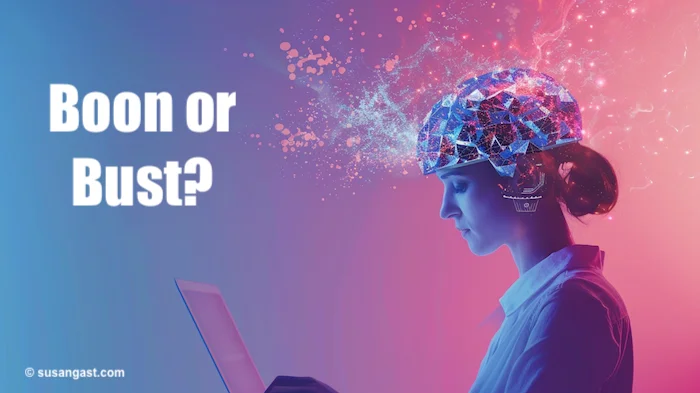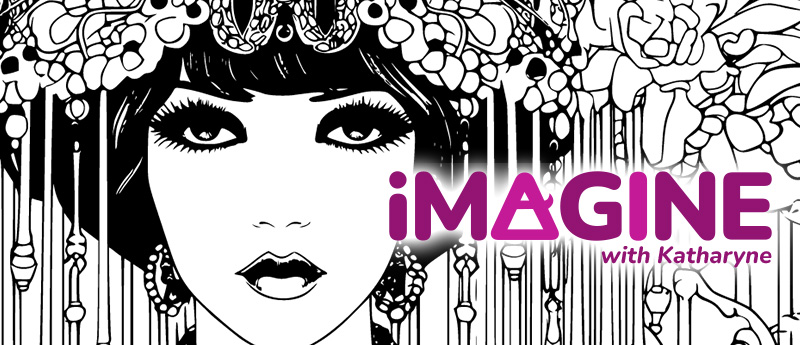- Home
- Using AI in Content Creation: Boon or Bust?
Using AI in Content Creation: Boon or Bust?
The Transformative Power of AI
Many of us are using AI in content creation, since Artificial intelligence (AI) has burst onto the content creation scene as an extremely powerful tool. While it promises to accelerate content production and lower costs, the question remains - could we get too much of a good thing?

Certainly AI will reduce overall content creation expenses. However, rather than simply "saving time," it will allow us to produce higher quality, more relevant content in less time. Where researching and writing an article may have taken a full week in the past, AI cuts that timeframe in half without sacrificing quality.
Of course, this also means content farms aiming to churn out low-quality "pap" at scale will be enabled to publish even more. Google's core updates over the past several years, culminating in the "EEAT" (Expertise, Experience, Authority and Trustworthiness) update make it clear - quality original content reflecting real expertise will be rewarded, while thin or duplicated content will sink in rankings.
As such, AI represents an opportunity both for producers of high-quality original content reflecting real-world expertise, as well as a challenge for low-quality content farms. Used properly, it can help the former group accelerate production and reach larger audiences with useful information, while punishing the latter group as their duplicated or autogenerated content is demoted for failing to meet Google's standards.
How AI Works- Using AI in Content Creation
AI tools like Claude, ChatGPT and Gemini (formerly Bard) work by ingesting and learning from massive datasets gathered by crawling gazillions of web pages. They employ natural language processing and machine learning algorithms to generate new text mimicking human writing style and tone.
As everyday users prompt these tools, they continue learning and improving their ability to produce helpful, human-like text on demand on virtually any topic imaginable.
Copyright and Ethics
The question of copyright is a complex one when it comes to AI. Content generated by tools like ChatGPT cannot be copyright claimed by humans, as we did not author it. However, the sites crawling and learning from copyrighted human-authored content to train their models also fail to secure permissions.
Ultimately AI cannot legally claim copyrights, while humans maintain ownership over their original writing. However, if AI-generated text is edited and adapted by humans, the resulting work can potentially carry a valid copyright.
Ethically, AI should be utilized thoughtfully, adding value for readers rather than duplicating existing content or publishing auto-generated gibberish. Quality over quantity is key. The human touch remains indispensable.
Ideation and Creativity
 Created with Midjourney
Created with MidjourneyAn interesting debate is whether AI can truly think like a human when using AI in content creation. In reality, it cannot originate ideas from scratch. It can only combine and repackage existing information in new ways that may appear original to prompt-writers. Truly groundbreaking conceptualization remains a uniquely human strength.
However, AI offers excellent support for boosting human creativity through prompting, suggesting related topics and even headline/title recommendations. By reducing the need for extensive research and info-gathering legwork, it enables creators to focus energy on higher-level strategy and creative thinking.
AI Beyond Written Content
While the first application of AI catching fire was text content creation through ChatGPT and similar tools, AI is rapidly expanding across creative fields:
Video production: invideo.ai can ingest blog posts or text prompts and automatically produce videos including subtitles, music and stock clips.
This allows sole creators to quickly and easily repurpose written content into engaging video.
Graphic design: Tools like Midjourney enable anyone to manifest creative visuals from simple text prompts.
This facilitates art direction and experimentation.
Data analysis: AI can scan datasets and documents to extract key information, recognize patterns and generate insights difficult for unaided humans to perceive. It is a huge asset for research and reporting.
The Positives and Potential Pitfalls of AI Content Creation
AI promises enhanced efficiency, ideation support, and multimedia content development capabilities. However, quality originality remains critical. AI cannot replace true subject matter expertise and the human creative touch.
Rather than fearing replacement, creators should recognize AI acceleration as an opportunity to publish more high-value content reflecting real-world experience. The future favors creators who embrace AI, while continuing to prioritize original perspectives.
SBI!'s Tai: Optimizing Humans and AI
Solo Build It (SBI) identifies the ideal balance between humans and AI in content creation by coining the phrase "Just Add You" (JAY).
Their new proprietary tool "Tai" utilizes state of the art AI to turbo-charge prompt engineering, ideation, outlines and draft creation. Features like "Prompt Build It" provide step-by-step guidance for crafting prompts optimized to elicit useful AI responses. Meanwhile, the invaluable Tai Guide imparts foundational principles for applying AI ethically to unlock creativity without plagiarizing.
However, SBI emphasizes that human creators must then take AI output and put our own stamp on it by rewriting, contextualizing and adding the nuance, humor and personality that AI cannot replicate. This formula respects the strengths of both human ingenuity and AI efficiency.
The Verdict: AI + Humans = The Future
In closing, rather than an existential threat, ethically harnessing AI represents a gateway to unprecedented creativity for human content producers.
Tools like Tai have graduated from novelties to indispensable creative partners. Far from making creators obsolete, they introduce new realms of possibility.
The future favors those embracing this symbiotic relationship between human and machine, while continuing to value expertise, originality and the human touch. Use AI to ideate and accelerate, then put your distinct stamp on the output before publishing. Optimize and rinse and repeat for content that converts and ranks.



































